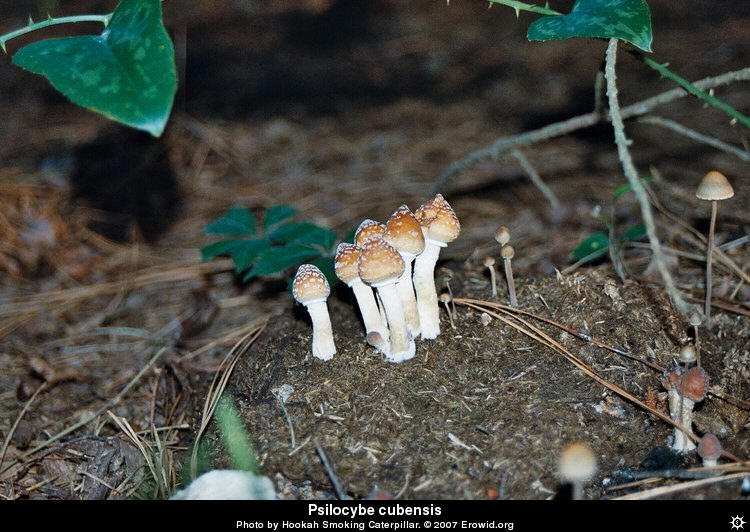Psilocybe cubensis
History & Reproduction
P. cubensis was first discovered by F.S. Earle in Cuba in 1904 who named it Stropharia cubensis at the time (stainblue.com, 2000). In 1941, a Florida man W.A. Murrill described it as Stropharia cyanescens. It received many names for being so abundant in the sub tropics and later moving north because of its all year round fruiting on cow pies. It has been found in Mexico, Central America, South America, West Indies, Thailand, Cambodia, India, Australia, and the United States.
P. cubensis was used dating all the way back to 15000 B.C. when ancient human bones and cattle bones were discovered and showed signs of using hallucinogenic mushrooms. Even the Mixtec Indians used hallucinogenic mushrooms as a ritual. They even had a god named Seven Flower who was portrayed having a mushroom in each hand.
P. cubensis is a member of the Basidiomycota therefore leading to no asexual reproduction and mainly sexual reproduction. A few ways that this fungus can spread is by natural occurrences such as wind, an animal transporting it such as the cattle egret, or by an organism walking past a field of P. cubensis and carrying the spores to another location. According to Paul Stamets, the orientation of the cap is affected by the direction of air currents, then by light, and finally by gravity (Stamets 1993).

